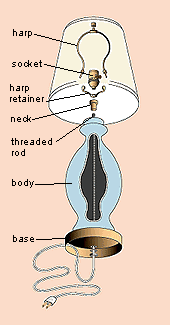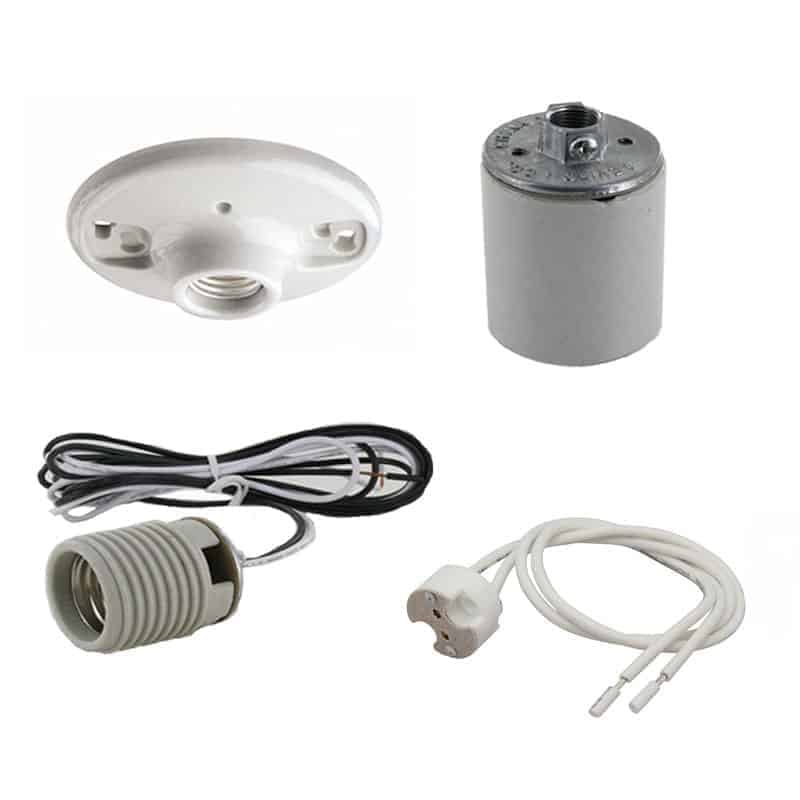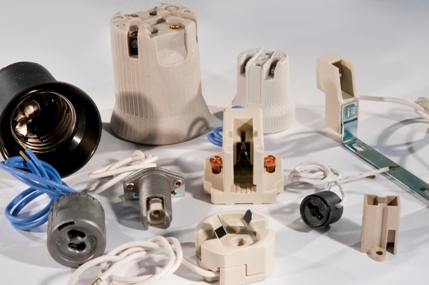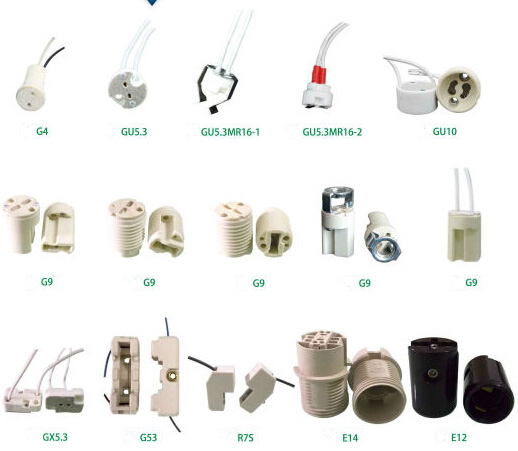Replacing a lamp socket can be a simple and cost-effective way to repair a lamp. However, it’s crucial to do so safely and properly to avoid any potential electrical hazards. Here are some tips to help you replace a lamp socket:
- Disconnect Power: Always unplug the lamp or turn off the circuit breaker before starting work. You want to ensure that there’s no chance of electrical shock while you’re working on the lamp.
- Choose the Right Socket: Make sure you have the correct replacement socket. Check the type (E26/E27, E12, etc.) and voltage of your existing socket and bulb to ensure the new one is compatible.
- Remove the Old Socket: Usually, you’ll need to unscrew the lampshade and light bulb, then remove the socket shell (the part you screw the bulb into). This can usually be done by either unscrewing it or popping it off depending on the type of socket. This will expose the socket interior and wiring.
- Note the Wiring: Inside the socket, you’ll typically find two wires – a hot wire (usually black or gold) and a neutral wire (usually white or silver). Note which wire connects to which terminal, as you’ll need to connect the new socket in the same way.
- Disconnect the Old Socket: The wires should be connected to the socket with screws. Unscrew these to disconnect the old socket. If the wires are soldered in place, you may need to cut them and strip the ends to connect the new socket.
- Connect the New Socket: Attach the wires to the new socket in the same way they were connected to the old one. The hot wire should go to the brass screw and the neutral wire to the silver screw.
- Reassemble the Lamp: Once you’ve attached the wires, you can put the socket shell back in place and screw the bulb and lampshade back in.
- Test the Lamp: Finally, plug the lamp back in and turn it on to test it. If the bulb lights up, you’ve successfully replaced the socket.
Remember, if you’re unsure about any part of this process, it’s best to hire a professional electrician to ensure the job is done safely.

Lamp socket replacement tips: Porcelain lamp socket are made out of an electrical insulating material that can withstand high temperatures. Electrical insulators such as porcelain prevent heat and electricity from transferring from one metallic device to another. lamp socket replacement are corrosion resistant and can come with a moisture gasket that makes it suitable for outside use. lamp socket replacements is found in antique lamps, vintage lamps and lamps that use halogen light bulbs or heat bulbs.
Traffic lamps can be replaced, by porcelain lamp holders, lamp shades, light board, light-emitting diodes, power cord and power plug, the mounting holes in the lamp holder, lamp shades and lamp holder tight-fitting, light board fixed lamp holders uniform light-emitting diodes distribution of fixed light board with light-emitting diodes connected to the power cord is connected through the power plug and the main control board interface.
Overall production replacement in accordance with the above-mentioned technical features traffic lamps, traffic lights malfunction or damage, maintenance personnel can quickly in its entirety to remove and replace another traffic lamps can be replaced as a whole, the replacement process is simple and convenient. fast and safe.

Ensuring that electrical appliances are in good condition is important. And, repairing a frayed appliance cord is a good way of doing your share to ensure home safety. On the other hand, when it comes to working on electrical appliances, there can be dangers especially if you aren’t careful. For example: If you replace a lamp cord with undersized wire, overheating can occur and a fire can result.
Doing these kinds of repairs is important, but you should be acutely aware of the importance of being extremely careful when working with electric appliances. It’s easy to prevent an electrical repair from backfiring once you realize what things can go wrong. So, read on and learn another trick or two. With a lamp there are two parts that are known to wear out occasionally and which must occasionally be replaced: the cord and the light bulb socket.
E27 lamp socket replacement and switch are easy. Don’t try to repair just the switch. You won’t save any money, and it may even cost more. Also, it doesn’t make any difference which style switch you select. There are three basic types to choose from: pull chain, push-push, and twist. Keep in mind that a switch is a switch is a switch and when it comes to “which type,” we suggest that you be the judge. There is, however, another consideration when selecting a switch.
A E26 light socket, also known as the Edison screw fitting, is a threaded screw base used to hold and connect a light bulb to a power source. Invented by Thomas Edison and marketed in 1909, these sockets typically have right-hand threads, which allow the light bulb to be screwed clockwise and removed counterclockwise. To deter theft in public places, the threads are sometimes reversed to prevent installation in common light fixtures.
Most standing lamps consist of a body, a base where the cord enters, a harp to support the shade, and a socket, which receives the cord at one end and the lightbulb at the other. The cord usually runs through a hollow threaded rod from the base to the E40 light socket.
When a lamp won’t work and you know the bulb is OK, check the cord for damage. If the insulation is worn and cracked, replace the entire cord (see Rewiring Lamps, Related Projects). If the cord is OK, the problem is most likely in the light socket.
Most lamps have felt light sockets that must be removed before repairing the lamps. Remove the felt by paring it off with a utility knife. After the repair, reapply the felt with white glue.















